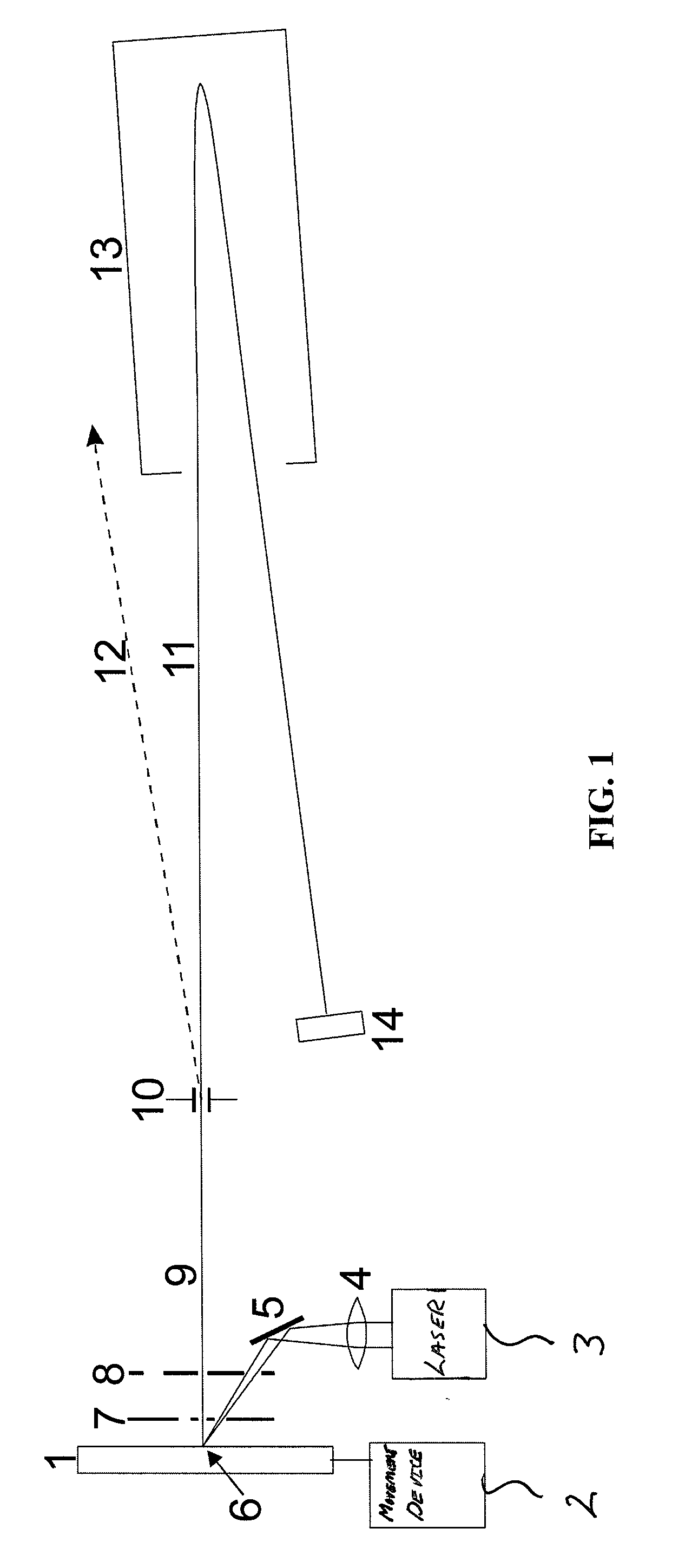Imaging mass spectrometry for small molecules in two-dimensional samples
a mass spectrometry and sample technology, applied in the field of spatial resolution mass spectrometry measurement and visualization of the distribution of small molecules, can solve the problems of insufficient scanning of individual mass spectrum, strong chemical background noise, and inability to achieve good detection sensitivity, etc., to achieve the effect of increasing the mass resolution, increasing the resolution of ion selection, and poor mass resolution
- Summary
- Abstract
- Description
- Claims
- Application Information
AI Technical Summary
Benefits of technology
Problems solved by technology
Method used
Image
Examples
Embodiment Construction
[0021]A first embodiment refers to the measurement of the spatial distribution of a single species of molecule in a thin histologic section with ionization of the analyte molecules by matrix-assisted laser desorption (MALDI). The spatial distribution of this selected species of small analyte molecule on the two-dimensional sample is measured with a MALDI time-of-flight mass spectrometer with reflector, as is illustrated in FIG. 1. A pulsed laser 3 should preferably be able to operate at a frequency of approximately two kilohertz. The sample is located on a sample plate 1, which can be moved in the plane of the sample, i.e., in two dimensions, by a movement device 2 with a high lateral accuracy of only a few micrometers.
[0022]The thin tissue sections are obtained in the usual way from frozen tissue using a cryomicrotome. They are usually around 20 micrometers thick. For the mass spectrometric analysis, they are placed on specimen slides, where they are adhesively affixed. The surface...
PUM
 Login to View More
Login to View More Abstract
Description
Claims
Application Information
 Login to View More
Login to View More - R&D
- Intellectual Property
- Life Sciences
- Materials
- Tech Scout
- Unparalleled Data Quality
- Higher Quality Content
- 60% Fewer Hallucinations
Browse by: Latest US Patents, China's latest patents, Technical Efficacy Thesaurus, Application Domain, Technology Topic, Popular Technical Reports.
© 2025 PatSnap. All rights reserved.Legal|Privacy policy|Modern Slavery Act Transparency Statement|Sitemap|About US| Contact US: help@patsnap.com


